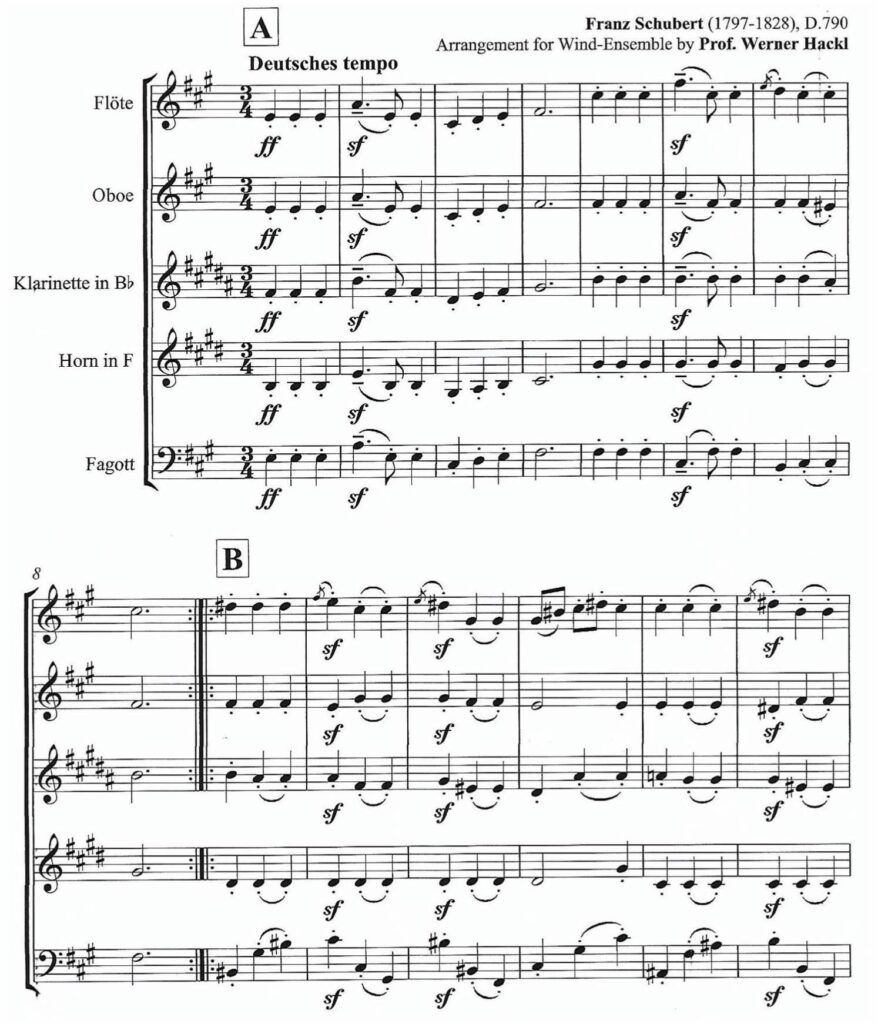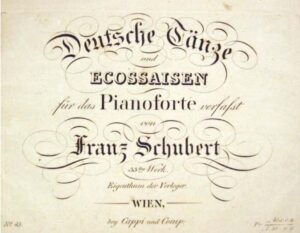Franz Schubert (1797-1828) Deutsche Tänze / German Dances, D 790

Haydn, Mozart und Beethoven schrieben Tanzmusik zumeist als Auftrag für Hof und Adel. Schubert war in der sozialen Stufe des heraufkommenden Bürgertums angesiedelt. Seine Tanzmusik entfloss keinem finanzträchtigen Auftrag, er wollte seiner Gesellschaft gelegentlich Freude bereiten. Sie ent- stammt einer Zeit, die in “E-Musik” und “U-Musik” noch keinen Gegensatz erblickte und so verleug- nen seine Deutschen Tänze bei all ihrer hohen Kunst nicht ihre echte österreichische Folklore. Schu- bert komponierte etwa 450 Tänze, die für den häuslich-kammermusikalischen Gebrauch bestimmt waren. Die hier vorgestellten Deutsche Tänze sind ein schneller Drehtanz im Dreiertakt, der sich im 18 Jh. zum Gegenstück des französischen Menuetts entwickelt hatte.

Haydn, Mozart and Beethoven wrote dance music mostly as a commission for the court and the nobility. Schubert was part of the social class of the emerging bourgeoisie. His dance music was not lost on a financially rich job, he wanted to give pleasure to his company from time to time. It comes from a time that saw no contrast in “E-Music” and “U-Music” and so his German dances, with all their high art, do not deny their real Austrian folklore. Schubert composed around 450 dances intended for domestic chamber music use. The German dances presented here are a fast rotating dance in three-beat, which had developed into the counterpart of the French minuet in the 18th century.
| sound sample / Tonbeispiel | score/parts PDF download: € 15,- | add to cart / in den Warenkorb |
